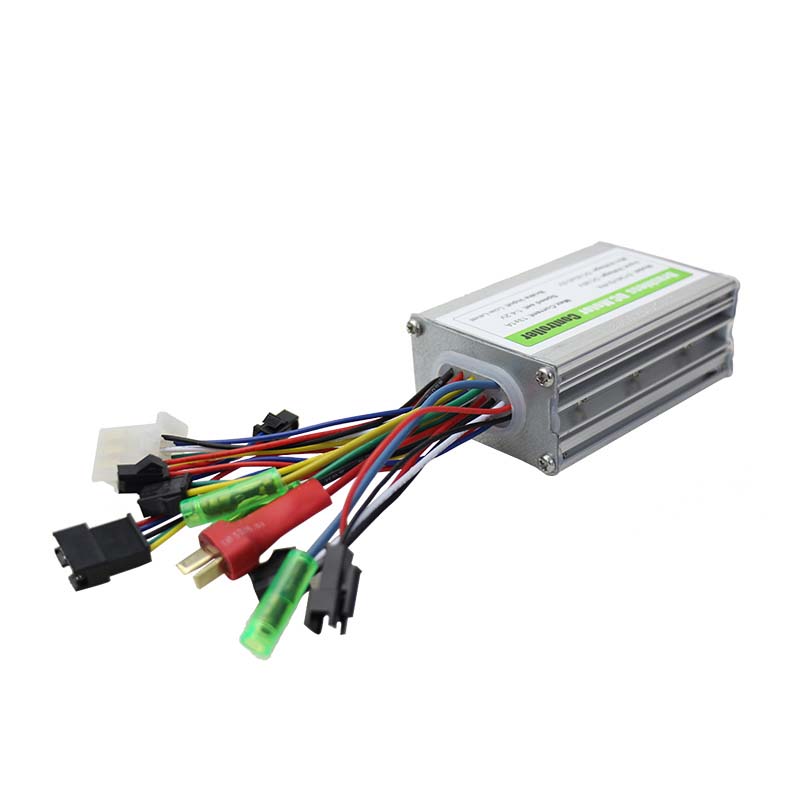electrical bicycle controller
There are two distinct types of controllers designed to match either a brushed motor or brushless motor. Brushless motors are becoming more common as the cost of controllers continues to decrease.
Controllers for brushless motors: E-bikes require high initial torque and therefore models that use brushless motors typically have Hall sensor commutation for speed and angle measurement. An electronic controller provides assistance as a function of the sensor inputs, the vehicle speed and the required force. The controllers generally allow input by means of potentiometer or Hall Effect twist grip (or thumb-operated lever throttle), closed-loop speed control for precise speed regulation, protection logic for over-voltage, over-current and thermal protection. Bikes with a pedal assist function typically have a disc on the crank shaft featuring a ring of magnets coupled with a Hall sensor giving rise to a series of pulses, the frequency of which is proportional to pedaling speed. The controller uses pulse width modulation to regulate the power to the motor. Sometimes support is provided for regenerative braking but infrequent braking and the low mass of bicycles limits recovered energy. An implementation is described in an application note for a 200 W, 24 V Brushless DC (BLDC) motor.
Controllers for brushed motors: Brushed motors are also used in e-bikes but are becoming less common due to their intrinsic lower efficiency. Controllers for brushed motors however are much simpler and cheaper due to the fact they don’t require hall sensor feedback and are typically designed to be open-loop controllers. Some controllers can handle multiple voltages.
To know more, pls leave us a message below
 hotebike
hotebike
